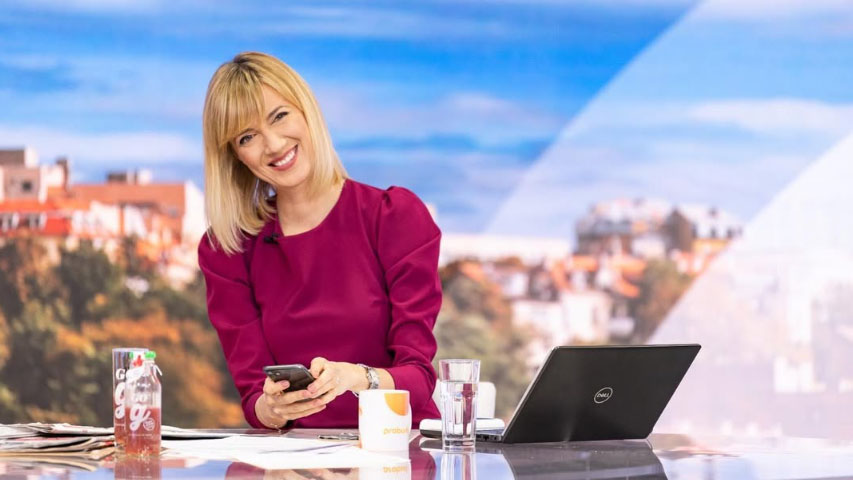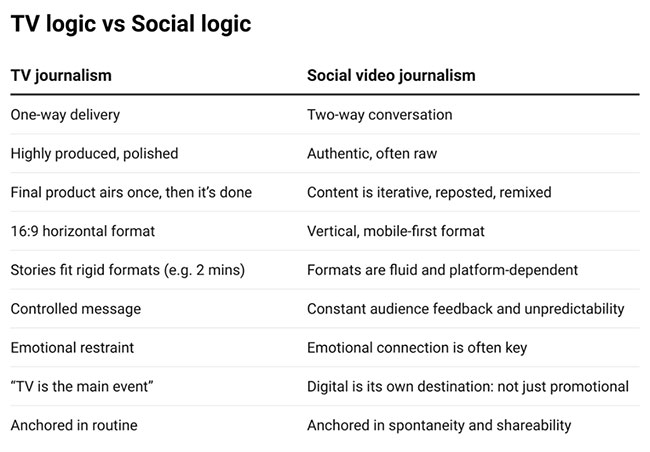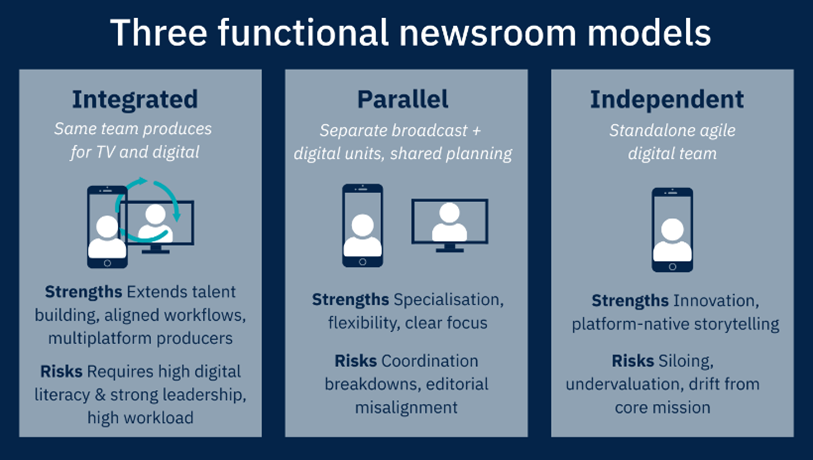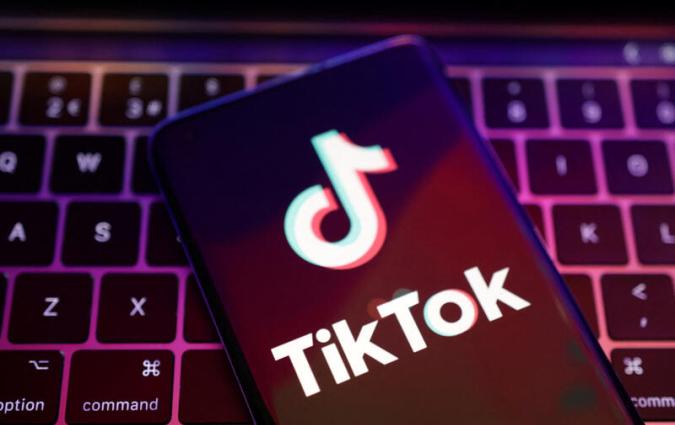In this piece
Bilingual broadcasting: How TV news is learning to speak to vertical social video audiences

Project author Nevena Madžarević on the set of Serbian morning TV news show, Probudi se (Photo: Supplied by TV Nova)
In this piece
From channel surfing to doom scrolling | Three models for adaptation | What performs well – and why | What needs to changeAcross the globe, television remains one of the most trusted and widely consumed news formats. But in the digital age, its one-way communication model is showing its limits. As social platforms become the dominant spaces for younger audiences, TV journalists face a new imperative: adapt their storytelling for vertical, interactive, fast-moving platforms – or risk becoming invisible.
This shift is not just about format. It’s about language. And like any language, it has its own tone, rhythm, and rules. It’s not enough to simply repost clips from the evening news. Audiences expect stories that feel native to the space they’re in – vertical in format, immediate in tone, and often built around the faces and voices of reporters themselves.
Over the past six months, I’ve interviewed newsroom leaders at ITV News, BBC, ABC, Al Jazeera, Globo and others to understand how TV journalists are adapting to social video. This article shares some of the key lessons – and tensions – that emerged.
From channel surfing to doom scrolling
The core tension is simple: what works on television doesn’t always work on TikTok. TV logic privileges control, polish, and structure. Social media rewards spontaneity, visual punch, and emotional resonance. For many newsrooms, this requires a mental reset.
At Al Jazeera English, digital producer and strategist Nabila Bana described how this disconnect shows up in the field. “[TV journalists] are under heavy stress and often lack the time to prioritise digital formats,” she said. “Many are unfamiliar with mobile shooting techniques, vertical video, and explainer content.”
Even seasoned anchors feel this tension. BBC Breakfast presenter Charlie Stayt publicly reflected on what he learned from JJ Olatunji (known as KSI), a British influencer, musician and boxer with a following on 25 million on YouTube. “Presenting TV news is one skill. Doing it on social requires something else entirely,” he said.

The shift is showing up in everything from set design – like the BBC Breakfast’s new vertical video wall – to new platform-first roles. At ITV, political correspondent Lewis Denison interviews cabinet ministers for TikTok, in vertical format, using his own voice and platform instincts. On the day of the Spring Statement, Rachel Reeves chose to speak directly to younger voters via Denison’s TikTok interview.
In a blog post for Press Gazette, Denison said young people are more interested in politics than he initially expected. Since launching in January 2024, the account has gained 334,000 followers and 11.4 million likes.
Three models for adaptation
TV newsrooms are approaching the social video challenge in different ways – but three broad models have emerged:
Repurposing TV content: The simplest and most common strategy. Clips from broadcast packages are cut and posted on Facebook or YouTube. While efficient, this approach often struggles to land on platforms like TikTok or Instagram Reels.
Adapting raw material: Here, teams rework TV footage with platform logic in mind – editing vertically, scripting for sound-off viewing, or using subtitles and graphics. At ITVX, extended versions of TV interviews are packaged as “middies” to give viewers deeper context. At Globo, digital producers turn newsroom footage into social-native narratives with distinct tone and visual pace.
Creating native content: The most ambitious approach involves building stories specifically for each platform. At Al Jazeera, teams script explainers and interviews from scratch for YouTube and Instagram. Sky and ITV have launched TikTok teams staffed by younger journalists who speak the language of the platform.
What performs well – and why
While no one has “cracked the code,” four content types consistently perform well across news platforms:
1. Breaking news and UGC: Real-time updates and verified user footage still drive engagement. But the stories need to be optimised for speed, clarity, and visual impact.
2. Bulletins (built for the platform): Quick roundups still work – when they’re adapted for vertical video, conversational in tone, and highly visual.
3. Explainers: Audiences want help understanding complex issues. Platforms like YouTube and Instagram reward explainers that are short, clear, visual, and emotionally intelligent.
4. Emotional storytelling: Faces matter. Stories built around human stakes – personal journeys, eyewitness moments, even frontline reporters’ voices – generate trust and engagement. Globo’s Eliseu Barreira told me: “A personal achievement story about a boy from a poor family who becomes a doctor resonates deeply with viewers, as does content about unusual or bizarre events that happen in everyday life.”
The most compelling emotional storytelling is also journalistically robust: verified, transparent, and reported with care. But it is built around human stakes, not just institutional power.
What needs to change
Too often, digital is still seen as promotional rather than editorial. That’s starting to shift – but slowly. Some organisations treat social teams as an afterthought, or assume young producers will naturally “get” the format. But success in this space requires investment, leadership buy-in, and cultural change.
Three functional newsroom models that work for the creation of video content emerged in my interviews, each with its own strengths and tensions.

At ITV News, where they employ an integrated model, Managing Editor Matt Brindley said their goal was to foster a culture where all producers – whether for broadcast or digital – feel responsible for delivering content that works across platforms. That means upskilling TV producers in social-friendly formats, and supporting digital producers to lead on editorial decisions.
“ITV recognised the need for a multiplatform work environment,” he said. “Previously, journalists were confined to specific roles: TV, digital, or field reporting, which limited skill development and job variety. This led to inefficiencies and staff turnover, as employees were denied opportunities due to a lack of experience they were never given. To address this, ITV restructured its approach, eliminating rigid role distinctions. Now, instead of separate TV, news, or digital producers, they train all producers to work across multiple platforms.”
What’s needed is not just a reallocation of resources, but a reframing of values. Digital-first storytelling isn’t second-class journalism. It’s a new frontier for public interest media. And it deserves to be led with the same rigour, clarity, and ambition as any primetime bulletin.
For more of Nevena’s work, including her recommendations for a phased integration and more on editorial team structures, see the full PDF version below.


